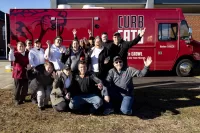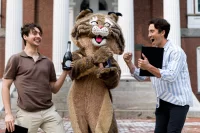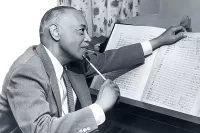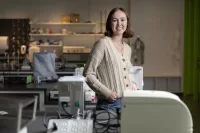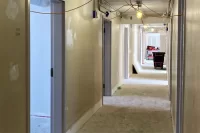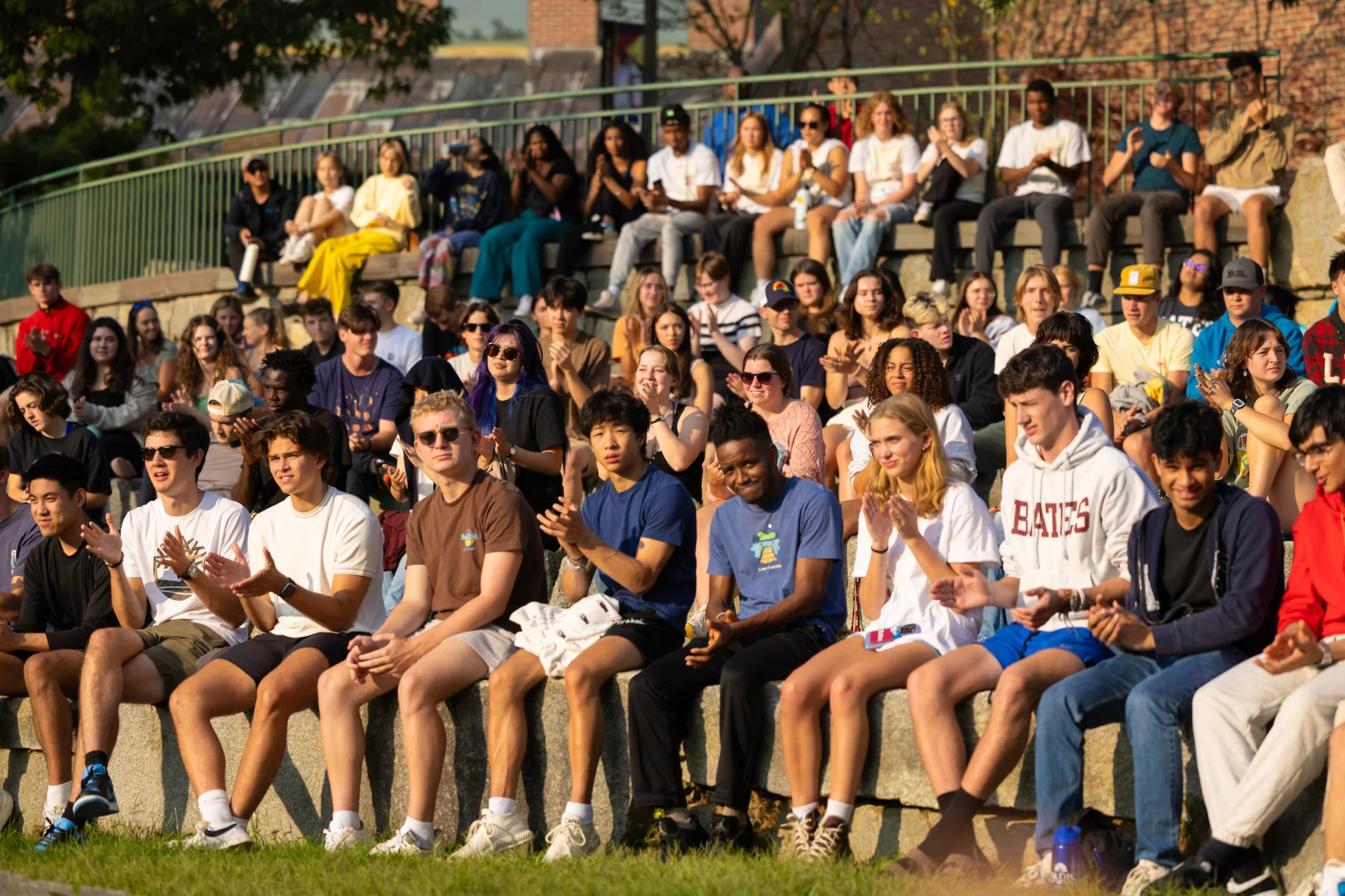
Christine Schwartz’s voice rings through the room, as heads nod and printed spreadsheets get flipped to the next page. Hands reach for the paper cups of coffee and cookies on napkins that are scattered all over the circle of tables, as a drought-breaking rain falls outside.
It’s Aug. 18, less than three weeks before the start of a new academic year at Bates. Schwartz, associate vice president for dining, conferences, and campus events, is leading an hour-by-hour run through of the tasks — all laid out in 40 color-coded pages — that will frame how Bates welcomes its students, especially the 520 members of the incoming Class of 2026, which by various measures, is the most diverse class ever.
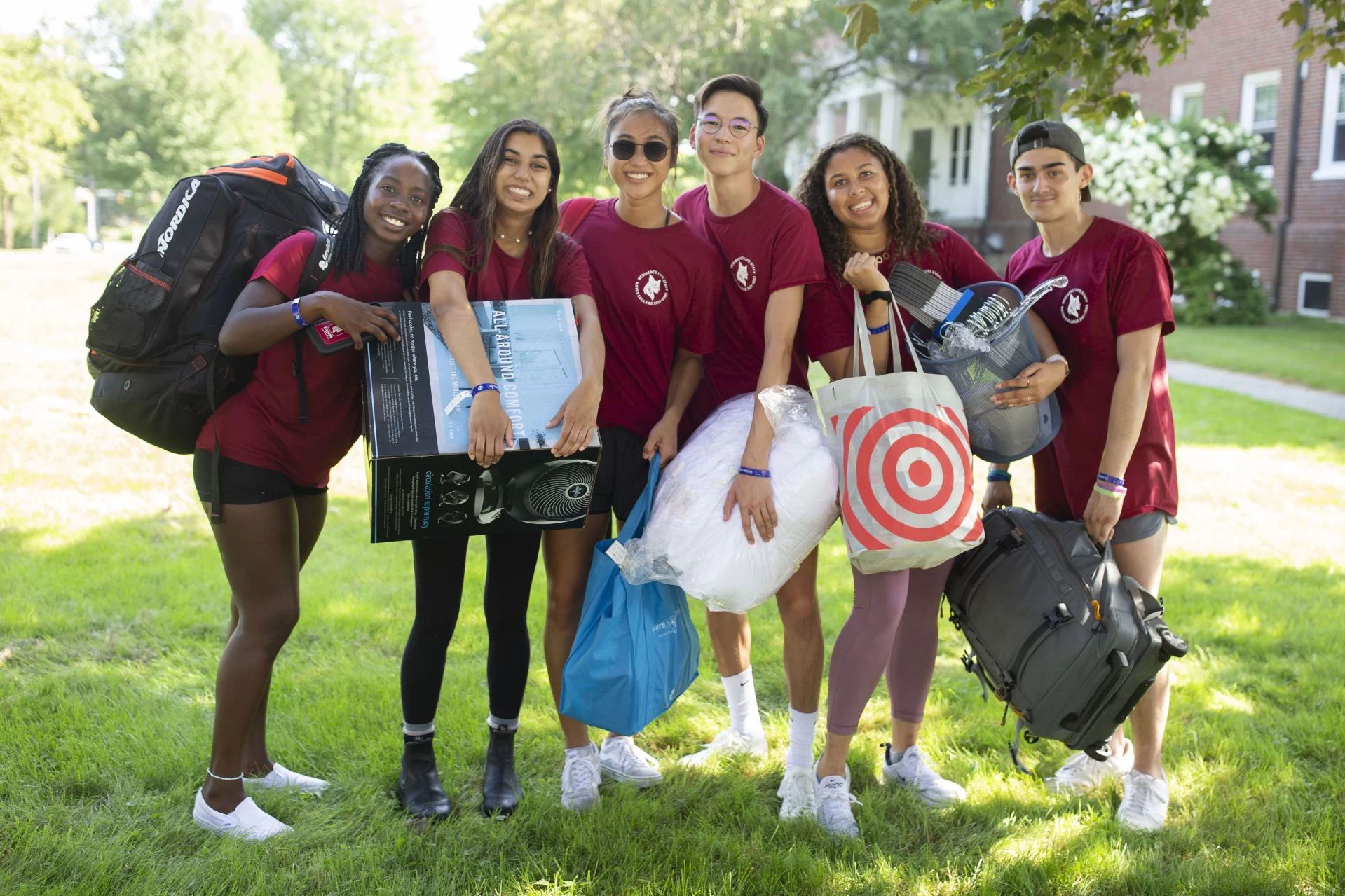
Involving nearly every department on campus, the tasks are mostly things like how many tables need to be set up where and when, and what tech support is needed for each event. Hands are raised, questions are answered, and responsible parties are checked and double-checked, until Schwartz gives an affirmative, “Awesome sauce!”
For the most part, the preparation is like any other year, and that’s what makes it a little unusual and exciting. COVID restrictions have been eased once again, and that means there are a few more events, crowd sizes can be a little larger, and faces will be a little more visible as the new students arrive on Wednesday, Aug. 31.
Of course, there are other changes afoot as well: President Clayton Spencer is beginning her 11th — and final — year as the president of Bates College, which she announced in June, and she will step down on June 30, 2023.
Dana Hall, formerly Dana Chemistry Hall, is on track to re-open for the first day of classes. The renovation took years of planning and about 14 months of bright orange fences, construction noises, and heavy machinery rolling around Alumni Walk, but it’s ready for its new role as the hub for introductory science courses. Across campus, historic Chase Hall is well into its own renovation to better serve as a home for student programs and services.
“We thrive on students being here. We love that.”
The vibe at Schwartz’s gathering, and the rising hum on campus, are reminders of the promise of a new school year. “It’s the togetherness,” says Ashley Pomelow, a custodial supervisor for Facility Services who has been at Bates for five years.
Sure, summer at Bates is busy — dancers from the Bates Dance Festival, scientists from the Gordon Research Conference, little kids from whatever camp is running that week. But it’s better when faculty, staff, and students — especially students — return and can move about campus freely.
“We thrive on students being here,” Pomelow says. Busy is good. “It’s weird, hard to explain you know? We just want the campus bustling, students going from dorm to dorm. Seeing the professors, everybody coming back into the academic buildings, is cool. We love that.”
The Class of 2026 is already well into a college-wide effort to help them get up to speed on all things Bates. The table has been set for them, so to speak. And more than a traditional orientation, the college’s First-Year Experience program offers a series of linked resources that spans a new student’s entire first year.
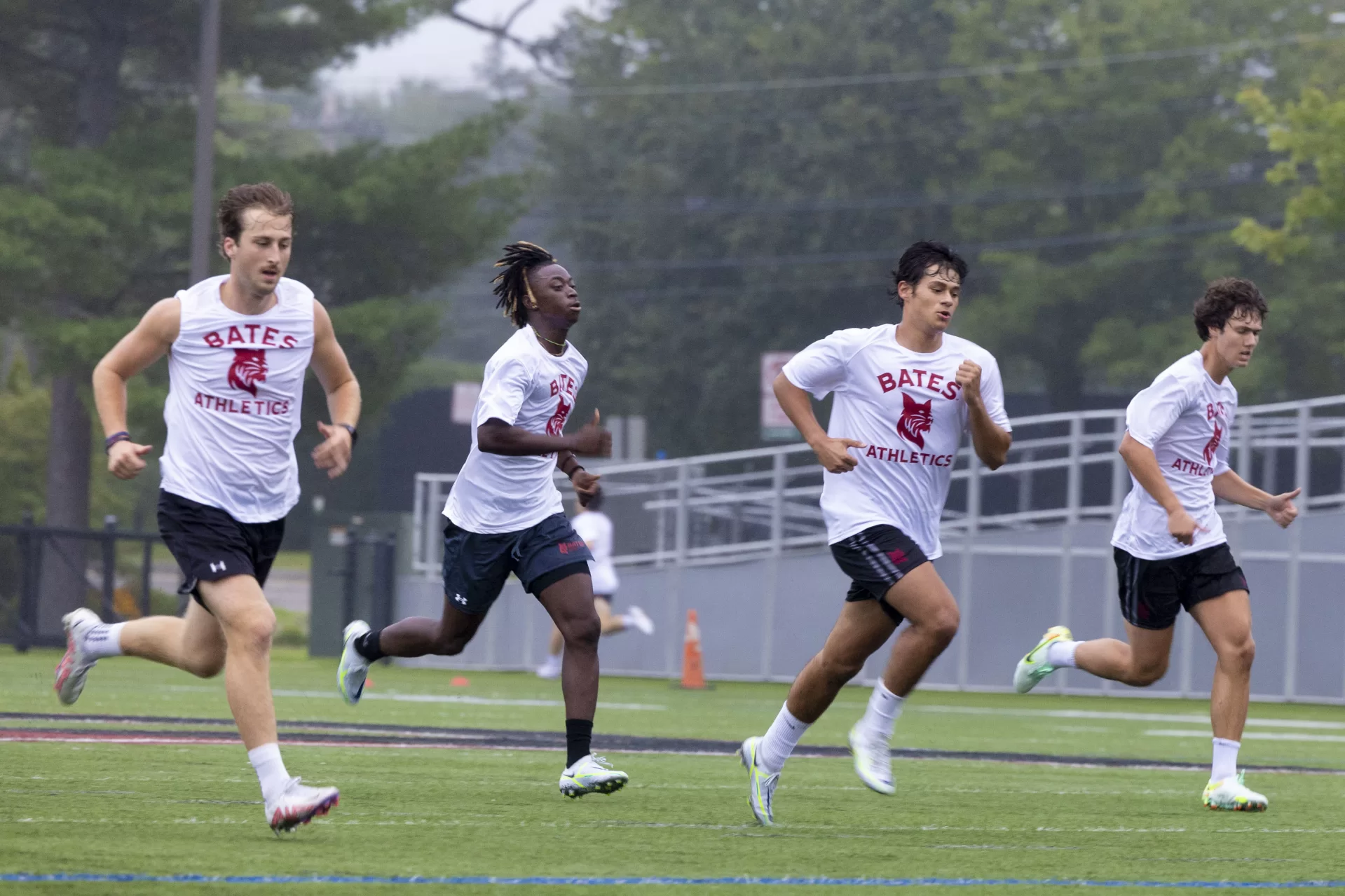
The FYE program represents a massive overhaul of how Bates welcomes students to their new community. Over the years, the Bates orientation had grown longer and become more jam-packed as college life grew more complex. When the Class of 1973 arrived 50 years ago, orientation was a snappy two days. When the Class of 1998 arrived 25 years ago, it was four days.
In recent years, it’s lasted up to nine days, after which students emerged dazed and confused. “We were pummeling them with information,” says Professor of Politics Steve Engel, an associate dean of the faculty for First-Year Experience and pre-major advising.
Students were overwhelmed, and weren’t getting the right resources at the right time. “We were giving them information that wouldn’t be relevant until late October, so why were we telling them in late August?” Not surprising, retention was poor. “We were out of step with best practice,” Engel says.
Toward the end of 2019, Engel teamed up with Blake Reilly, associate dean of students and director of operations, to rework the Bates orientation. With help from an ad hoc committee of faculty, staff and students, they developed an overarching theme for what would be called the First-Year Experience, focusing on six community values that new students should learn to embrace, from equity and inclusion to health and wellness.
Importantly, they also created a calendar that spreads out the delivery of information relating to the six values, not only deeper into the first year but well before the start of classes, starting in July.
“Elongating the timeline helps students understand that the whole first year” — not just a few days — “is where you’re going to build relationships, build community, connect with faculty, connect with other students,” Engel says.
Ironically, the pandemic helped define that calendar. In spring 2020, as Bates made plans to welcome students back to campus in the fall, it became obvious that all orientation programming had to be virtual.
So Engel and Reilly and their colleagues got to work — fast — creating a huge amount of informational materials, including a variety of short videos, in just a few weeks, then deployed the content to students over the summer. “Some of it was good and some of it was bad,” Engel admits.
Reilly explains what was good: Delivering information, often by short videos over the summer about policies, procedures, and how Student Affairs offices support students.”
But other kinds of learning “needs to happen in person and some resources need to be explained in person,” Engels says, such as the difficult topics around sexual consent, boundaries, and healthy relationships.
“I don’t think we would’ve gotten to where we are now — which I think is a pretty good and innovative place — without having gone through the pandemic because we probably never would have created the summer resources. And we would not have learned the nuances: how to leverage new technology, or when the old-fashioned way of doing something is the better way. We wouldn’t have been able to figure that out.”
The slower, more spread-out pacing of the First-Year Experience model “helps us reframe the expectations they should have about themselves. Hopefully, it also de-stresses them a little bit,” says Engel. It also means that the first few days a student is on campus can “focus on community building, connecting with other students, and reflection and processing around the beginning of college and the transition to college,” Reilly says.
The various videos that students see over the summer feature Bates staff and faculty, so students can gain a familiarity with Bates faces even before arriving on campus. “These are people who become integral parts of a student’s lived experience at Bates,” Engel says. “We want to make sure that those voices are heard. These are all people you’re going to interact with, so they should all be represented in these videos.”
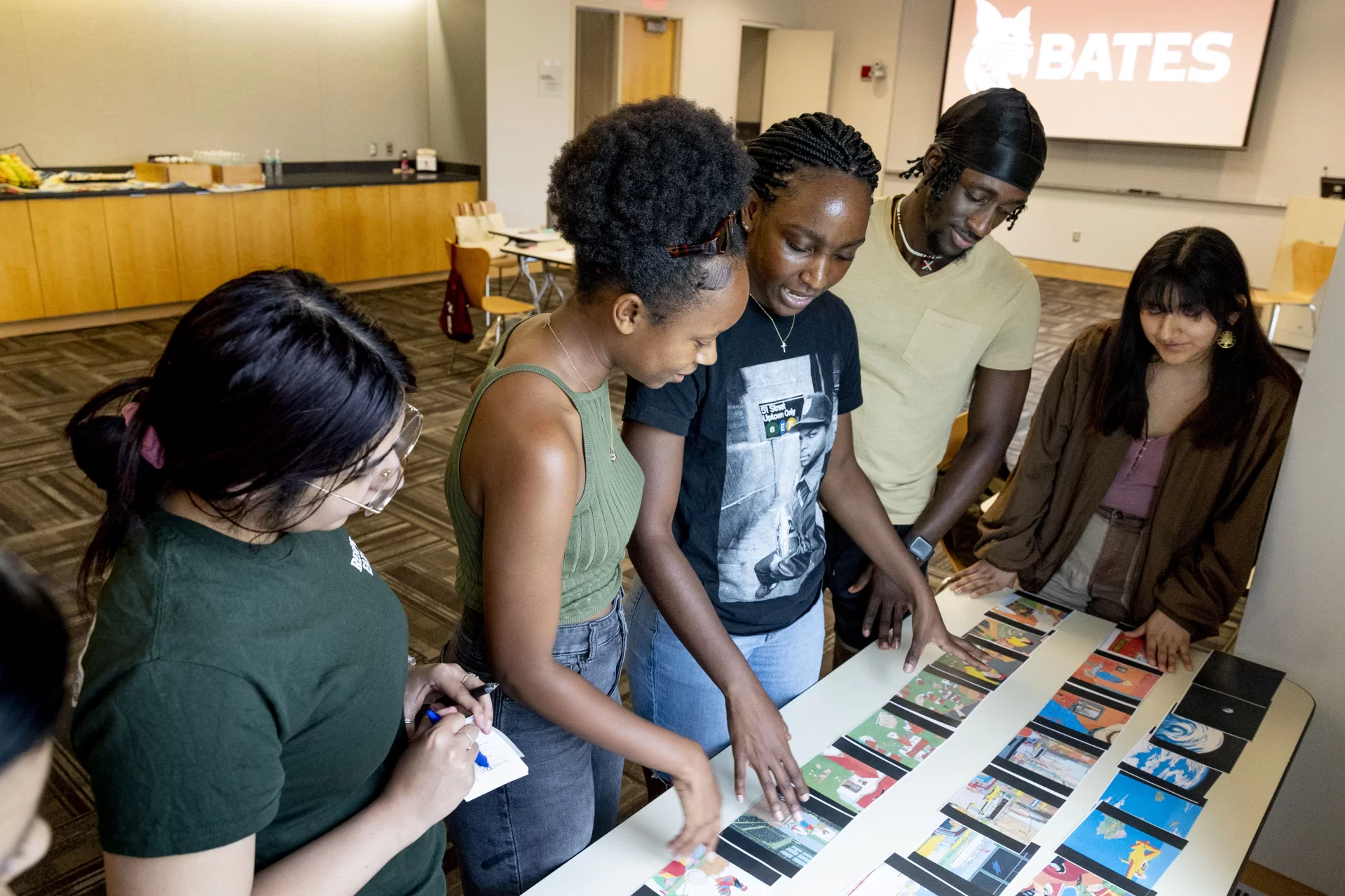
This helps with the goal of inclusion, too.
“We found that if you’re a continuing generation student, you can talk to your parents or other members of your family and they will tell you where to go or who to see,” Engel says.
“But if you’re a first generation student, you don’t have that resource. We’ve tried to take a universal design approach where we say, ‘What if no one has gone to college before?’ By doing it this way, we’re trying to also expose that hidden menu and make it very transparent.”
Since the early 1990s, a centerpiece of orientation has been a program of multi-day, student-led off-campus trips known as AESOP, which originally stood for “Annual Entering Student Outdoor Program”; In recent years, “Outdoor” has become “Orientation,” a reflection of how the program is changing to meet the needs of students.
In the past, AESOP trips were typical of what other New England small colleges offer: camping, biking, and hiking, canoeing excursions. But a desire for more accessibility and inclusivity motivated the creation of a new structure for the program. “It’s really shifted to an environment of affinity-based trips,” says Anna Brown, coordinator of residence life for First-Year Experience.
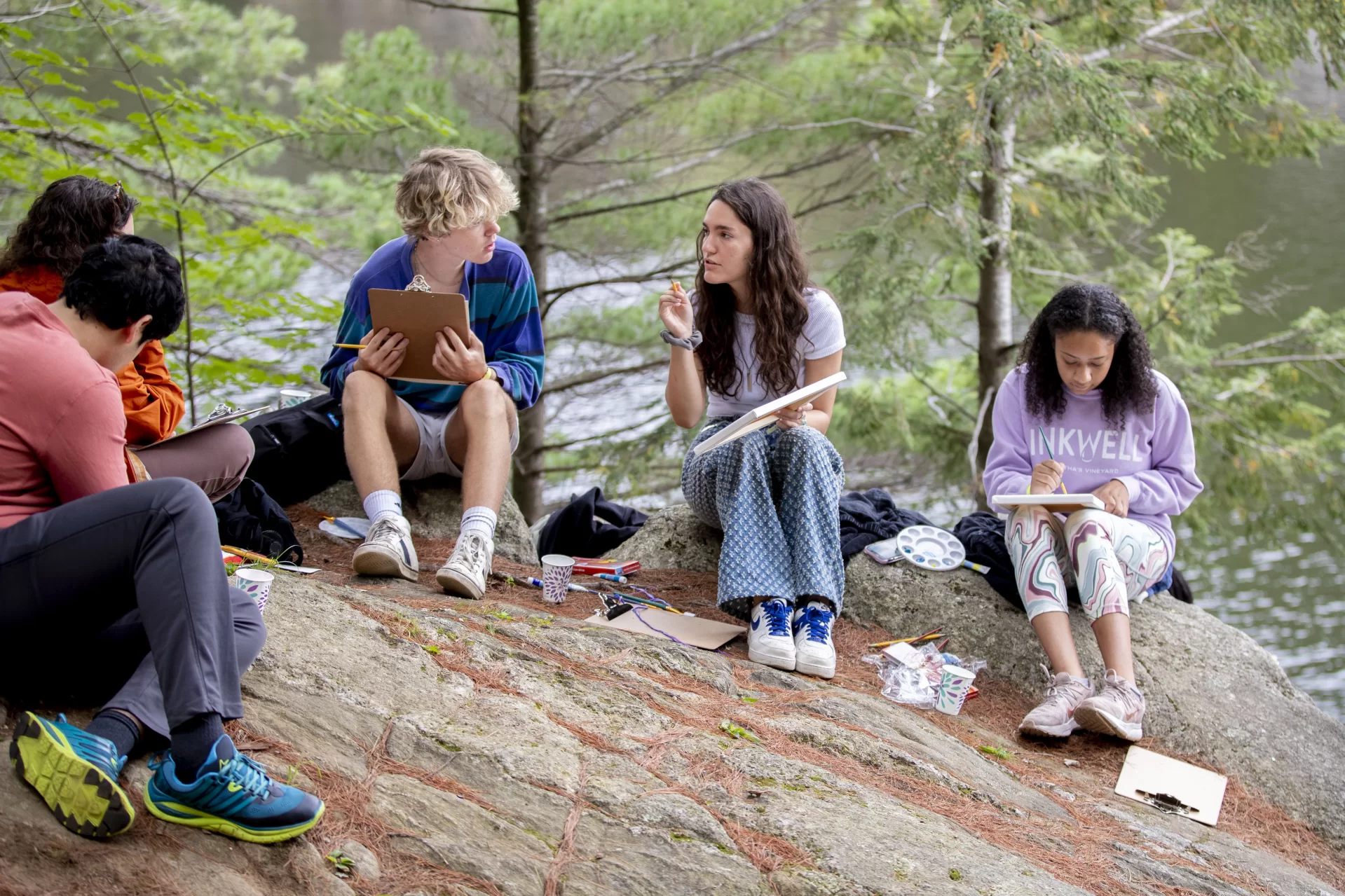
The ultimate goal of the three-day, two-night AESOP program is still to help introduce students to each other and to Maine. As Engel says, “AESOP trips are basically opportunities for students to engage in New England, Maine and the community that they have moved to.”
“There are these concentric circles,” Says Engel. “Bates is an integral member of the Lewiston community, and Lewiston is part of Maine. Maine is part of the country, and the country is part of the world.”
AESOP focuses on the two of the inner circles, Lewiston and Maine. Traditional trips — such as canoeing beautiful Aziscohos Lake, near the Canadian border in Western Maine — still abound. But students can also do gardening events, create a short film, visit the Greater Androscoggin Humane Society, or even alternate knitting and surfing — at the beach.
Due to the pandemic, 2019 was the last time Bates provided overnight off-campus trips. Current seniors are the only class with first-hand experience with ASEOP, as participants in 2019 not as trip leader or coordinators.
“It’s been a little bit of a learning curve for everyone,” says Caitie Luedee, the coordinator of outdoor education and programs for Student Affairs. “But they have been phenomenal. Anytime you can fill a room with variety of knowledge and skills — all the way from someone who’s a really experienced backpacker to someone who knows a lot about community engagement or art — people are excited about it.”
AESOP’s goal is to connect these students to the places and people they will, for most, be calling home for the next four years, Luedee says. “And I think sharing an outdoor experience, especially when it’s out of your comfort zone, especially when it’s overnight, you connect and you create bonds that are hard to break.”
